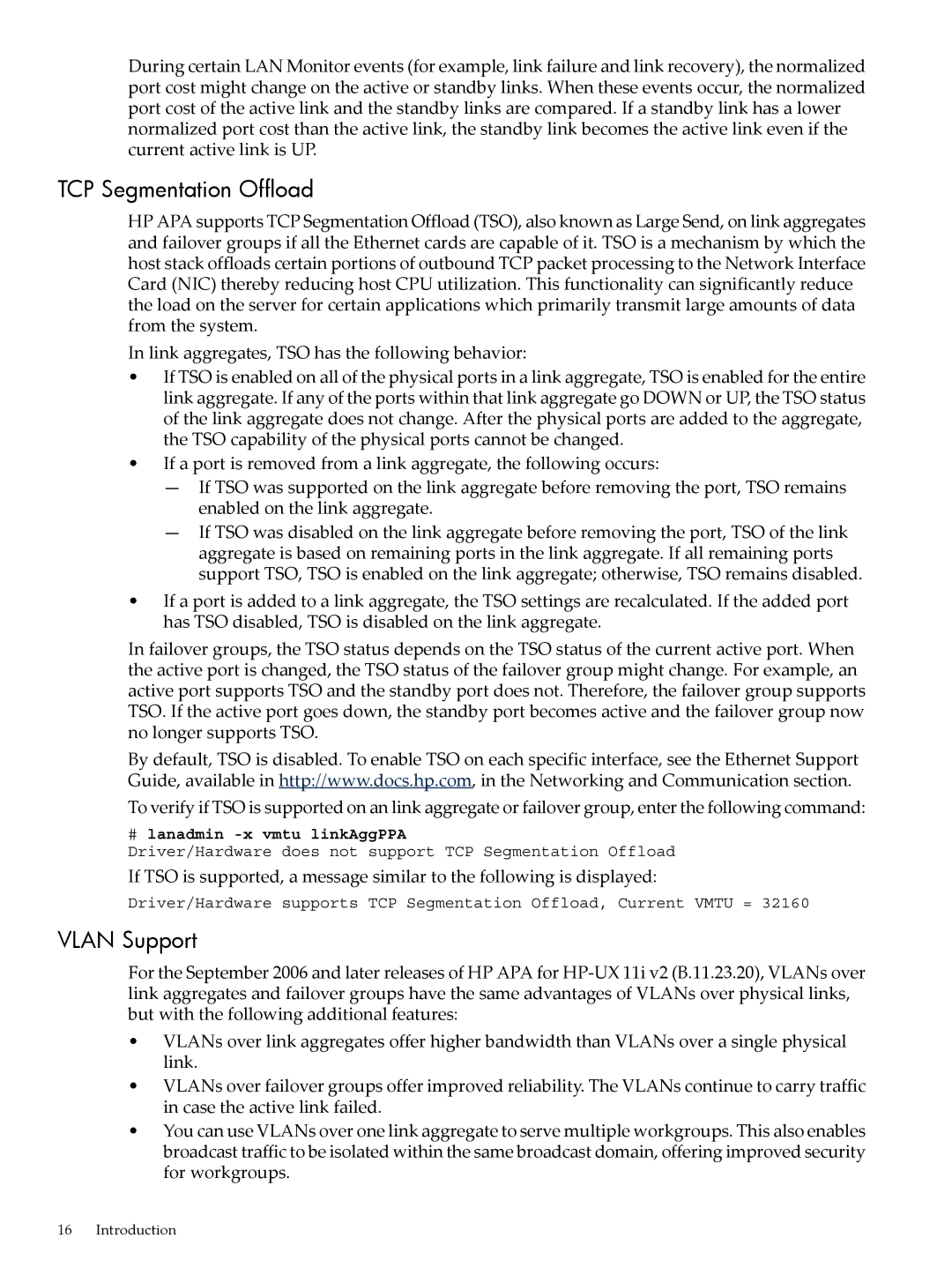During certain LAN Monitor events (for example, link failure and link recovery), the normalized port cost might change on the active or standby links. When these events occur, the normalized port cost of the active link and the standby links are compared. If a standby link has a lower normalized port cost than the active link, the standby link becomes the active link even if the current active link is UP.
TCP Segmentation Offload
HP APA supports TCP Segmentation Offload (TSO), also known as Large Send, on link aggregates and failover groups if all the Ethernet cards are capable of it. TSO is a mechanism by which the host stack offloads certain portions of outbound TCP packet processing to the Network Interface Card (NIC) thereby reducing host CPU utilization. This functionality can significantly reduce the load on the server for certain applications which primarily transmit large amounts of data from the system.
In link aggregates, TSO has the following behavior:
•If TSO is enabled on all of the physical ports in a link aggregate, TSO is enabled for the entire link aggregate. If any of the ports within that link aggregate go DOWN or UP, the TSO status of the link aggregate does not change. After the physical ports are added to the aggregate, the TSO capability of the physical ports cannot be changed.
•If a port is removed from a link aggregate, the following occurs:
—If TSO was supported on the link aggregate before removing the port, TSO remains enabled on the link aggregate.
—If TSO was disabled on the link aggregate before removing the port, TSO of the link aggregate is based on remaining ports in the link aggregate. If all remaining ports support TSO, TSO is enabled on the link aggregate; otherwise, TSO remains disabled.
•If a port is added to a link aggregate, the TSO settings are recalculated. If the added port has TSO disabled, TSO is disabled on the link aggregate.
In failover groups, the TSO status depends on the TSO status of the current active port. When the active port is changed, the TSO status of the failover group might change. For example, an active port supports TSO and the standby port does not. Therefore, the failover group supports TSO. If the active port goes down, the standby port becomes active and the failover group now no longer supports TSO.
By default, TSO is disabled. To enable TSO on each specific interface, see the Ethernet Support Guide, available in http://www.docs.hp.com, in the Networking and Communication section.
To verify if TSO is supported on an link aggregate or failover group, enter the following command:
#lanadmin
Driver/Hardware does not support TCP Segmentation Offload
If TSO is supported, a message similar to the following is displayed:
Driver/Hardware supports TCP Segmentation Offload, Current VMTU = 32160
VLAN Support
For the September 2006 and later releases of HP APA for
•VLANs over link aggregates offer higher bandwidth than VLANs over a single physical link.
•VLANs over failover groups offer improved reliability. The VLANs continue to carry traffic in case the active link failed.
•You can use VLANs over one link aggregate to serve multiple workgroups. This also enables broadcast traffic to be isolated within the same broadcast domain, offering improved security for workgroups.
16 Introduction
